
홈
Gaya Tumuli
Okjeon Tumuli
Okjeon Tumuli
Okjeon Tumuli
- The highest-status cemetery of Daraguk
- It is positioned in a hilly area adjacent to the Hwanggang River, an important crossroads for multiple traffic routes, indicating that Daraguk carried out active exchanges with other Gaya polities and neighboring states.
General Information
- Designation: Historic Site No.326
- Construction period: 4th-6th centuries
- Property area: 14.47ha
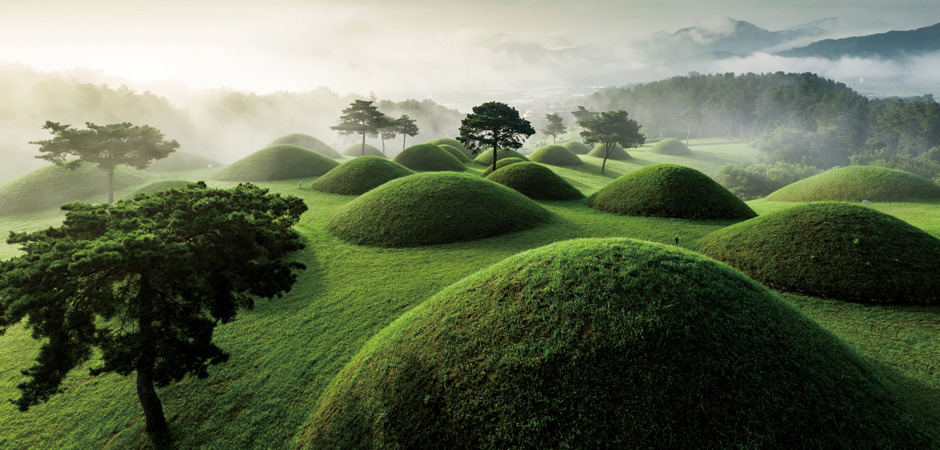
-
overview
- The name of this cemetery, Okjeon, literally means "jade fields." This is derived not only from the large amount of jade beads excavated from the cemetery, but also from the name of the neighborhood in which it is located (Okjeon Village in Hapcheon County, Gyeongsangnam-do Province). Tombs housing the Daraguk ruling class were constructed here from the fourth through the mid-sixth century. It is positioned in a hilly area adjacent to the Hwanggang River, an important crossroads for multiple traffic routes, indicating that Daraguk carried out active exchanges with other Gaya polities and neighboring states.
The cemetery had been covered with a thick layer of trees until the mid-20th century, archaeological research in the 1980s revealed it to be of Gaya origin.. Excavations during the 1980s produced material evidence of the existence and geographical location of Daraguk, a Gaya polity that had only been known through historical documents. Research on types of burials and grave objects identified the significance of the Okjeon Tumuli as an important example among Gaya cemeteries. It was designated a Historic Site in 1988.
The cemetery has 53 mounded tombs in various sizes. Over the fourth to the mid-sixth century, the dominant form of burial at the Okjeon Tumuli gradually shifted from wooden chamber burials to stone-lined chamber burials and then to corridor-chamber tombs. Some of the tombs here show the cultural impact of tomb construction traditions from other Gaya polities. Wooden chamber burials from the fourth century are found in clusters at the top of the central hill. Stone-lined chamber burials and corridor-chamber tombs from the second half of the fifth century and later stand on the western hilltop. Tombs from this period have yielded burial objects that manifest the highest level attained by Gaya metal craft. There are tombs from the first half of the sixth century on the slopes. With the fall of Gaya, tomb construction at the Okjeon Tumuli ceased. Archaeological research has identified about 100 wooden chamber burials without a burial mound in the summit area of its eastern section. Among the roughly 30 mounded tombs with stone-lined chambers or corridor-chambers constructed in the summit area of the western section, 10 have been excavated.
Located in the geographical center of the Gaya Confederacy, Daraguk grew by drawing on the trade conducted along the Hwanggang River. Some of the stone-lined chamber burials at the Okjeon Tumuli include separate chambers for burying the tomb occupant and for depositing burial goods, similar to those built in the Geumgwangaya area. Others are more elongated than those in the Geumgwangaya area, which is thought be an influence from Daegaya. Tombs at the Okjeon cemetery have produced considerable quantities of military objects such as large swords, armor, and horse trappings, as well as trade goods. The iron swords embellished with dragon and phoenix designs and gilt-bronze helmet excavated from Tomb No. M3 are remarkably lavish in decoration. They demonstrate advanced crafting techniques and provide a telling example of the conspicuous expression of power by the ruling class at the time. Also excavated from the Okjeon Tumuli are a gilt-bronze hat and bronze vessel from the Baekje Kingdom, a gilt-bronze crown from the Silla Kingdom, a glass cup from Central Asia that transited via Silla, and armor from Japan. These grave goods testify to the active trade relations Daraguk maintained with other states.
Picture
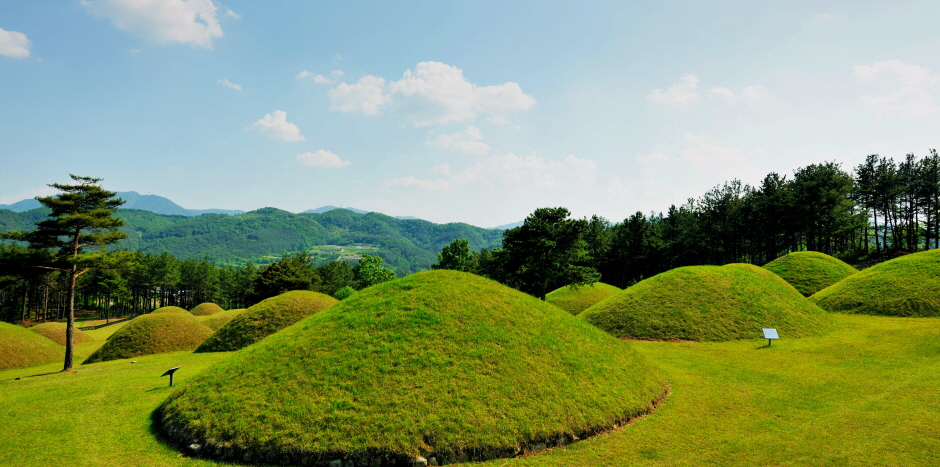
view of Okjeon Tumuli, Hapcheon

view of Okjeon Tumuli, Hapcheon
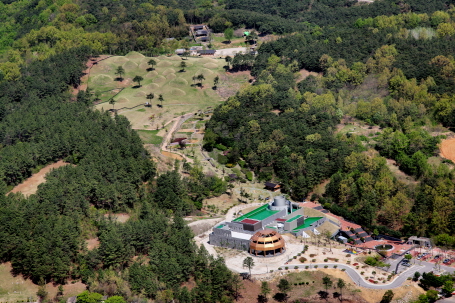
view of Okjeon Tumuli, Hapcheon
Relics
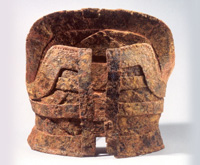
Tomb No.68 iron armor
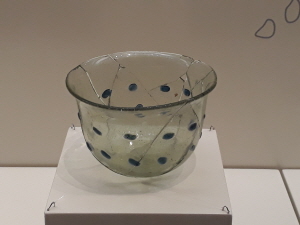
Tomb No. M1 glass
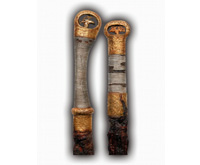
Tomb No. M3 Sword
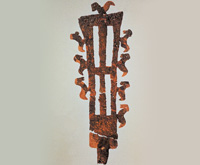
Tomb No. M6 pol-top with barbs
